For many years, I have been growing native plants and have picked up tips and tricks along the way. Here is a summary of some of my learning.
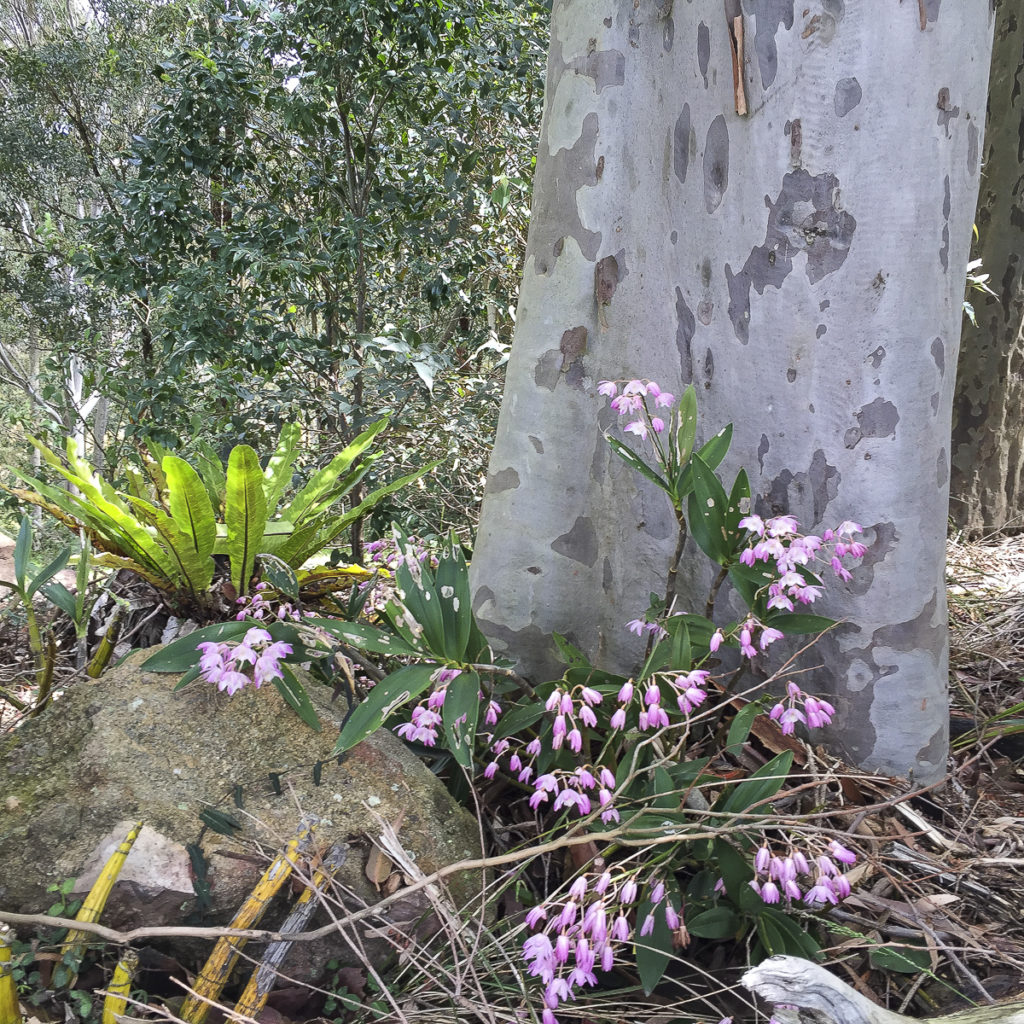
1. Planting under gum trees
To maximise your success in getting your plants to grow, plant them as close to the trunk as possible. The reasons you do this are:
- There are very few tree feeder roots to rob your plant of nutrients and moisture.
- During rain, a lot of water runs down the trunks of the tree and hence towards your newly planted plant
2. A great screening plant
If you need a great screening plant that is not too tall (three metres), not too wide (one and bit metres), grows in sun, grows in shade, is drought hardy when established and has coloured new growth…Then select Acmena smithii variety minor. You will find it at all good nurseries.
3. Poor performers
Be ruthless with plants that do not perform in your garden. There are far too many new and exciting plants to try, so dig out the underperformers and consign them to the bin.
4. Group your plants
To get the best out of your plants group those needing like-conditions together. Low water requirement together, shade loving plants together, moisture loving plants together. Basic, but vital.
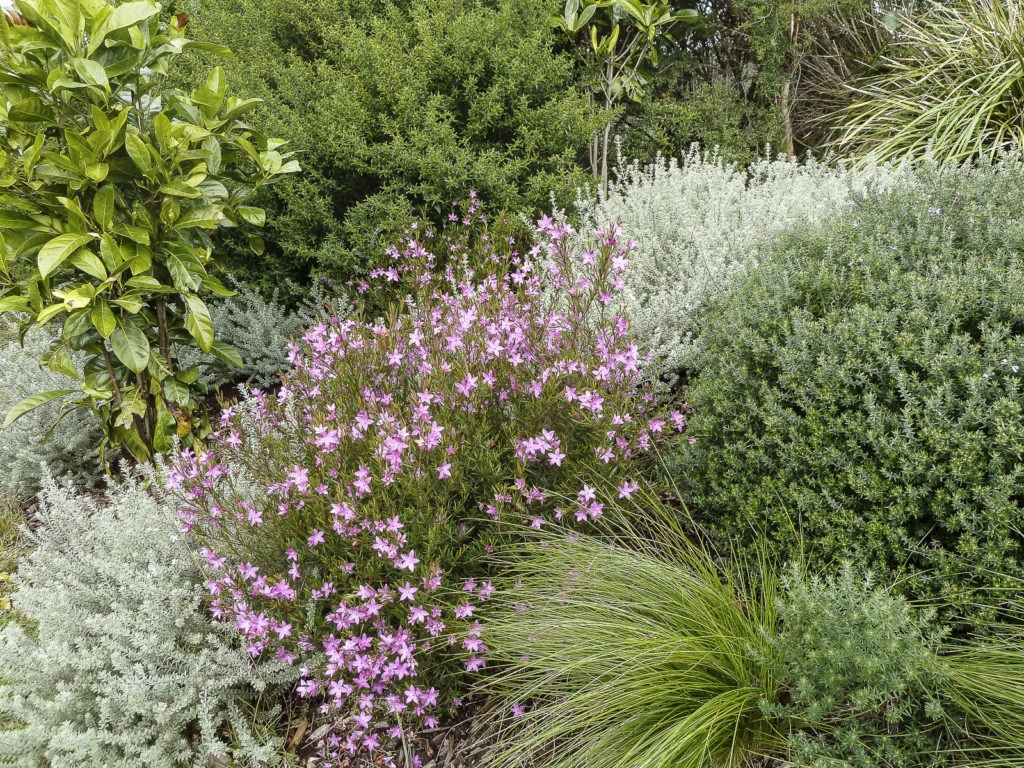
5. Forget the spring flush
Design your garden so you have plants that flower at different times of the year and not only at spring. There is no better way to beat the winter doldrums than to see a patch of colour on a cold day – try Croweas or Correas.
6. Native plants are just plants
Just a reminder – they are no different to any other plant, they need watering, fertilising and pruning to grow them at their best.
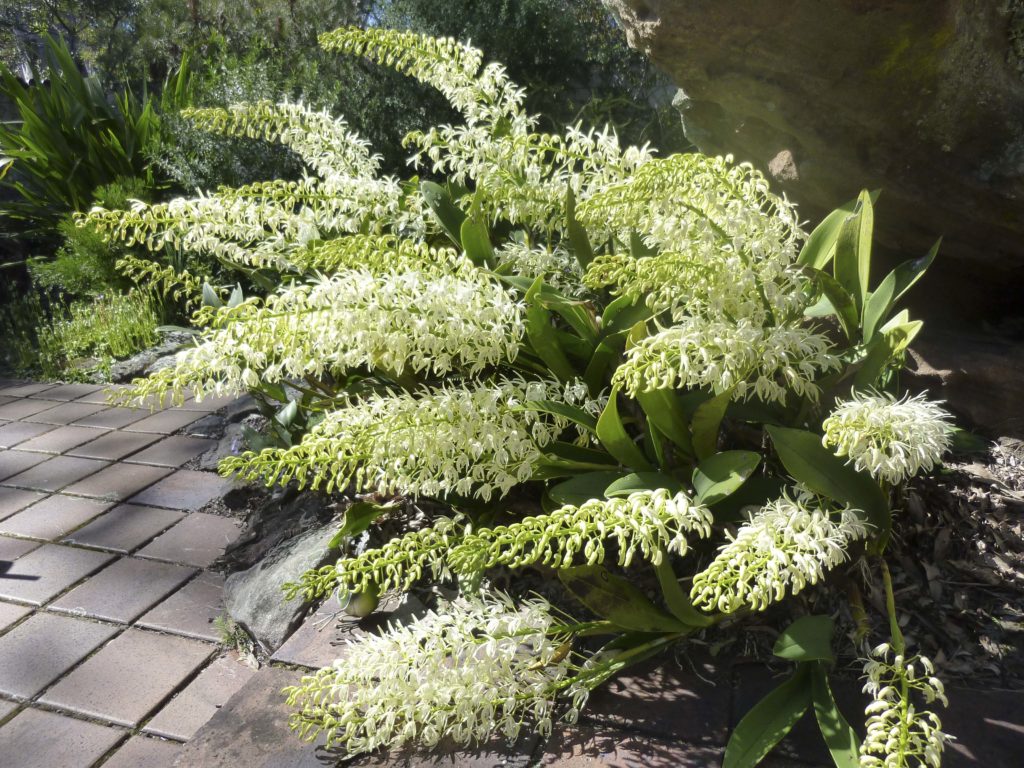
7. Hardy orchids
I have found that Dendrobium kingianum and D. delicatum grown on rocks and logs, above ground, in dappled light to full sun are tough near drought tolerant plants (water only every two to three weeks) AND they flower beautifully in spring – try some.
8. No feeding – not true
Do not be afraid to fertilize your native plants and orchids during the warmer months when they are growing. Use any fertilizer labeled suitable for native plants. Your plants will look much better and healthier for it.
9. If it’s native it will grow anywhere – not true
We have well over 20,000 plants growing in Australia and they are growing in deserts, along the coast and up to the Alps. When selecting plants for your garden, choose ones that naturally grow in similar conditions to yours, this will increase your chance of successfully growing them.
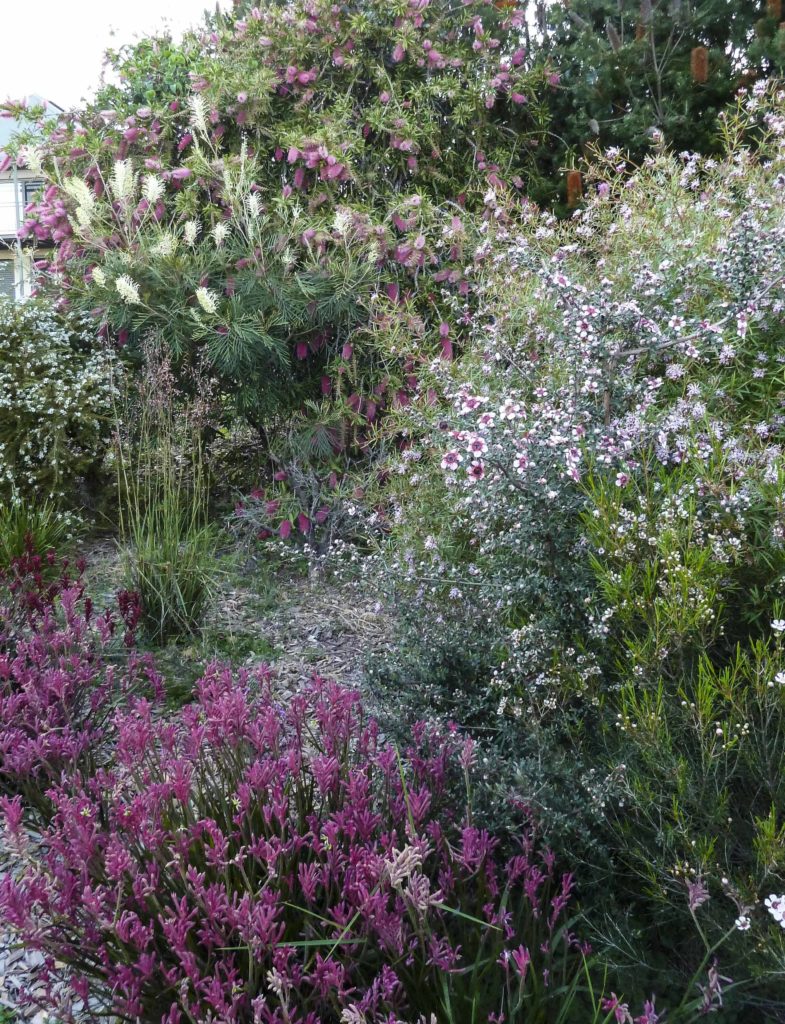
10. Treated pine logs
If you are constructing retaining walls and steps, use treated pine logs rated H4 as this is suitable for in-ground applications. The H3 rated logs are only suitable for above ground applications as they have a lower level of preservatives.
11. Prune bottlebrushes to increase next year’s flowers
When the flower has finished, and before new growth has commenced, cut the top 2/3’s off the flower. This will encourage multiple shoots from the remaining 1/3, each of which will produce a flower for next year. Well worth the effort.
12. Pots
If you have soil that is too heavy to grow plants like Boronias, buy a large plastic pot, cut the bottom out of it pace this on the ground (loosen the soil first) then fill the pot with potting mix and plant your plant. Finally mulch well the soil around the base of the plant. The advantage of this method is eliminating the need to repot the plant every two years or so.
13. Habitat gardening
Think about habitat before you plant/dig/remove logs and rocks etc. Apart from planting native plants, you will also be creating a habit style garden where native plants will play a part of the food chain for any animals and insects etc. That is why it is important not to remove any rotted stumps/fallen timber (unless a nest for white ants) and puddles in your desire to obsessively tidy up. You should be aiming for retaining a wide diversity of habitats.
Because you do not want to end up with a jungle, you will need to selectively hand weed or mow at the appropriate time as well as prune….all part of becoming a habitat gardener, more so if you use indigenous plants.
14. Landscaping
Think of the site when you are landscaping and the existing biodiversity. In paved areas water must be allowed to percolate downwards, therefore no mortared joints. Use raised wooden decks rather than concrete for areas close to the house and boardwalks rather than paths. For areas away from the house, try to create bird habitats, leaving dead trees if they contain potential nesting sites.
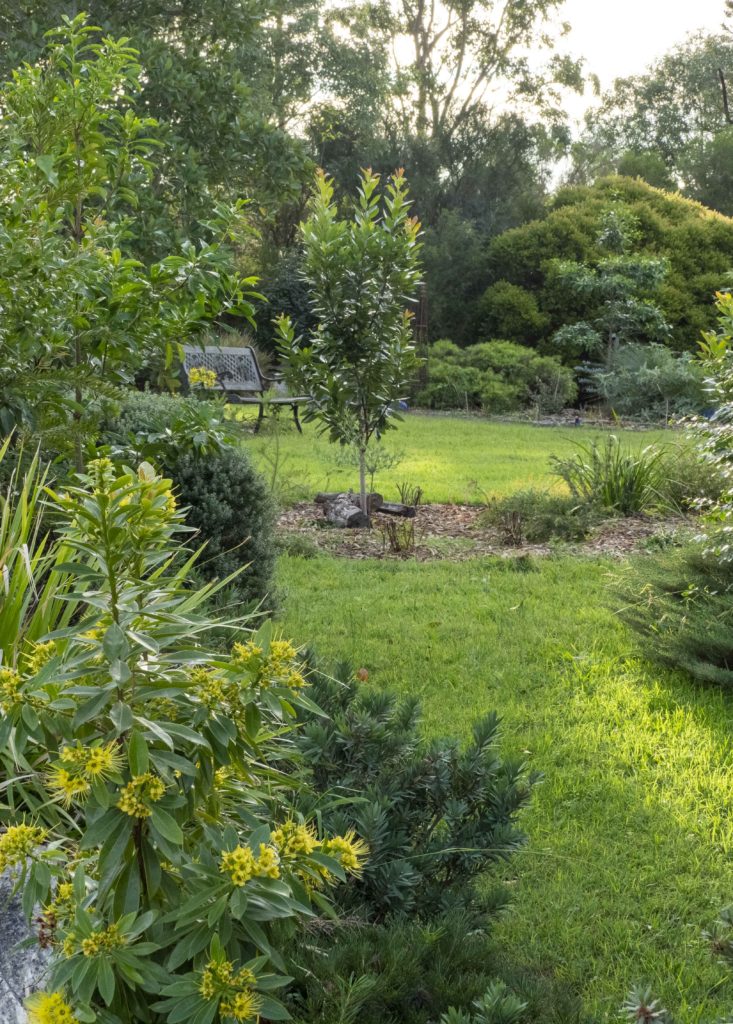
15. Reduce the impact of Pied Currawongs
Three things you should be doing:
Reducing the amount of plants (native and introduced) with berries as this is a major source of food for Currawongs
Stop artificial feeding
Plant dense and spiky shrubs to provide safe nesting and hiding spots for smaller birds which the Currawongs prey on.
16. Long flowering mint bushes
Prostantheras are not renowned for their long flowering time – unfortunate, given how attractive they are in flower. Two that I find to flower for nearly a month are: Prostanthera ’Poorinda Ballerina’ and Prostanthera phylicifolia. The second one also grows and flowers well in shade. Both are hardy and only grow to a meter tall.
17. Kangaroo Paws, Anigozanthos
Anigozanthos species are promoted as drought hardy. If yours are just sitting there looking unhappy and not flowering, it’s likely because they need a lot of water in winter (especially the taller flowering forms that flower in spring only). This is what they receive in their original habitat – the south western corner of Western Australia. For the smaller flowering Bush Series that flower all year round, it is best to give them less winter watering than their taller cousins. After flowering they all need to be cut back hard to the ground and cut leaves removed. It is rumoured that some growers actually mow them with their lawn mower – effective but a bit extreme.
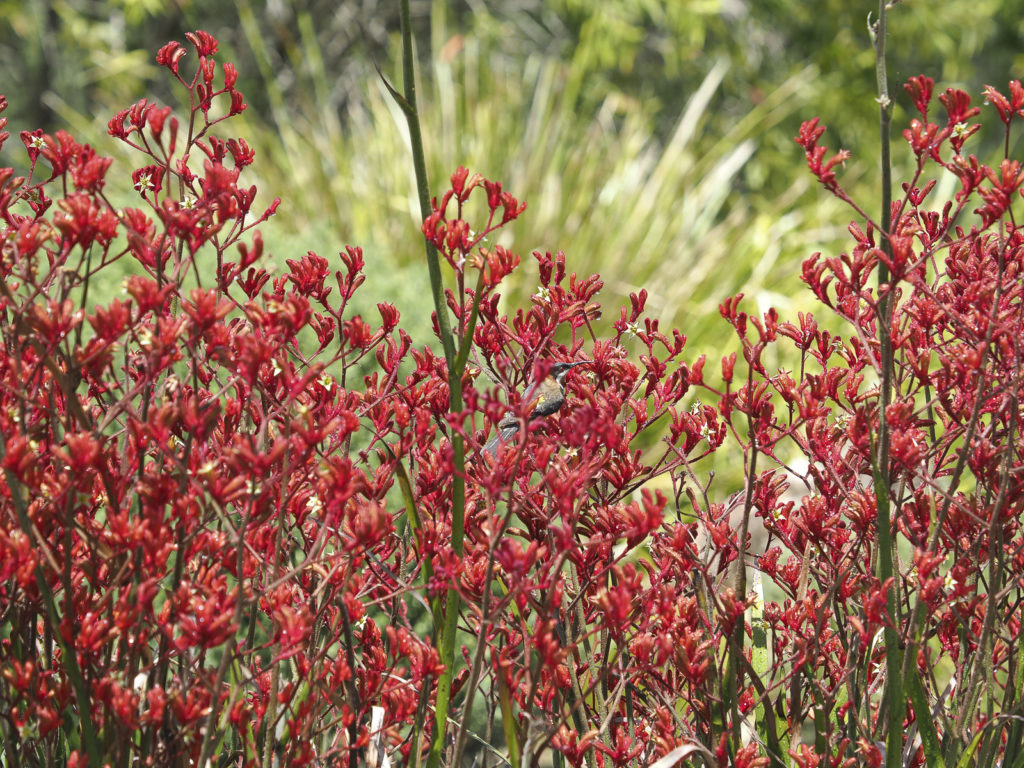
18. Birds in the garden
When I observe the limited amount of birds that my garden attracts, I am always fascinated that such a large bird as the King Parrot can eat very small seeds from plants such as Baeckia crenatifolia and Crowea Festival to name a few.
19. Two excellent hardy grassy type plants to grow
Lomandra ‘Tanika’. This plant has attractive fine green leaves, is very hardy and only grows to 50 cms. Mine are growing in very dry situations and only get a burst of mid day sun, with dappled light for rest of the day. Talking to some “gardening industry” people, the only maintenance appears to be lifting them every five years and dividing them up and starting again.
Poa australis. This is a very attractive small grey-green grassy clump whose flower seed heads appear above the plant in spring to summer. It is hardy in all situations and the only maintenance is again to divide them after flowering which is very easy to do and results in many more plants.
20. Pretty and local to Sydney
If you are after a long flowering plant, look no further than Ricinocarpos pinifolius or as it is more commonly known – the Wedding Bush. A local to Sydney, it starts to flower in August then rests with the odd spot flowers and then starts flowering again more heavily in November/December. The showy 2.5 centimetre five petal white flowers stand out well against the attractive green linear leaves. This plant is very hardy. My plant is about 1.8 metres tall and is in a well drained position protected from the westerly sun.
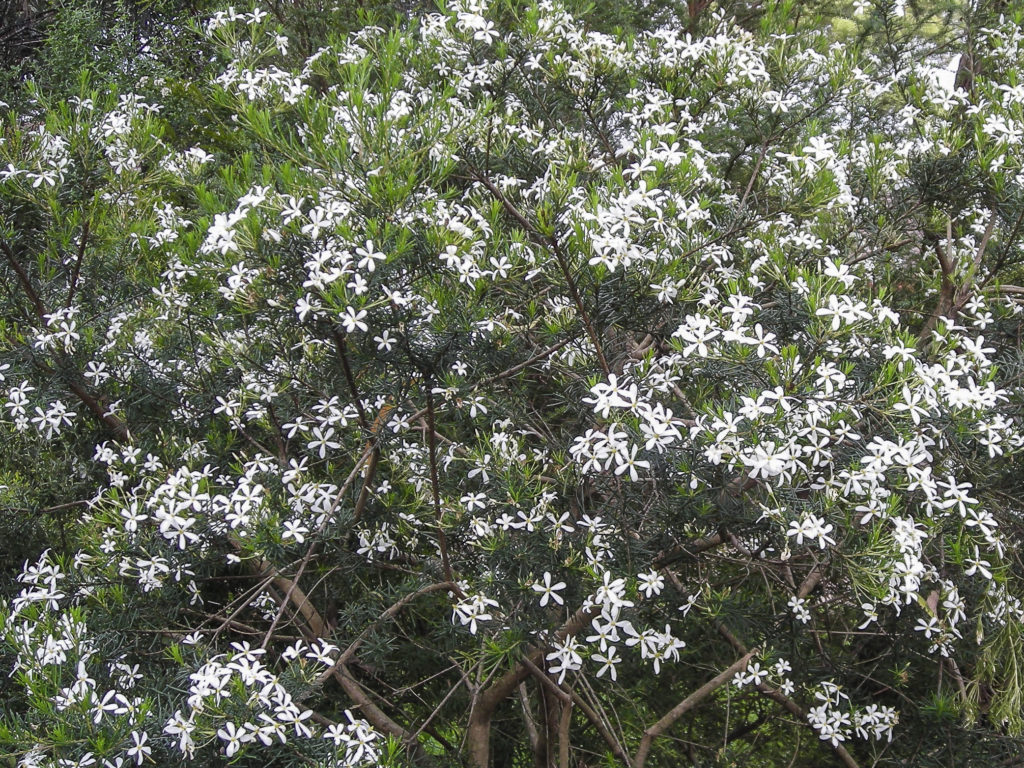
21. Severe pruning
Last year some of my Crinum pedunculatum, or Swamp Lily, which were growing in a very dry situation were looking a bit scrappy so I cut them down level with the ground and forgot them. In place of each plant I now have three very healthy plants that flowered at Christmas for me. So do not hesitate to resort to this type of “pruning”. Incidentally while this plant has the common name of Swamp Lily it is very hardy and will survive and flower well in situations which are dry and receive only dappled light – a great accent pant if grouped in clumps of three or five.
22. Snail baits
Be careful when using snail or slug baits as most commercial products contain metaldehyde which, when exposed to water, quickly breaks down to a harmless alcohol. (Fresh metaldehyde is toxic to slugs, snails, birds, cats, dogs, elephants, rabbits, humans and many more other creatures great and small)
23. Benefits of rain
I have often wondered, especially in drier times, why plants look and grow much better after rain than when they are hand watered. After surfing the wide world of the net I found that rainfall contains small quantities of dissolved nitrate and ammonia, which are forms of nitrogen, hence the growth spurt.
24. Repotting
I am sure we have all read the freely available advice about repotting pot plants into larger pots. The advice is along the lines of: “Only pot into the next size pot up or maybe the next two sizes of pots”. An example of this would be to pot on a plant growing in a 150 mm (6”) pot into a 200 mm (8”) or 250 mm (10”) pot size.
I have found this to be quite true because the potting mix can remain quite wet if there are no plant roots to take-up the excess moisture. This is especially so if the plant is potted on late into the growing season and growth has slowed. In this situation, the roots can rot and you lose the plant. There are exceptions of course, like plants with a strong and quick growing root system (e.g. Prostanthera species). However, as a general guide follow this rule and you will increase your success when repotting plants.
25. Do not repot pot plants on to quickly
it is best to wait until growth slows and roots appear out of the drainage holes. Another sign will be when the plant needs daily watering in summer.
26. Ponds work to attract frogs (in my opinion)…..
If you install a pond you will quickly attract (stripped marsh) frogs.
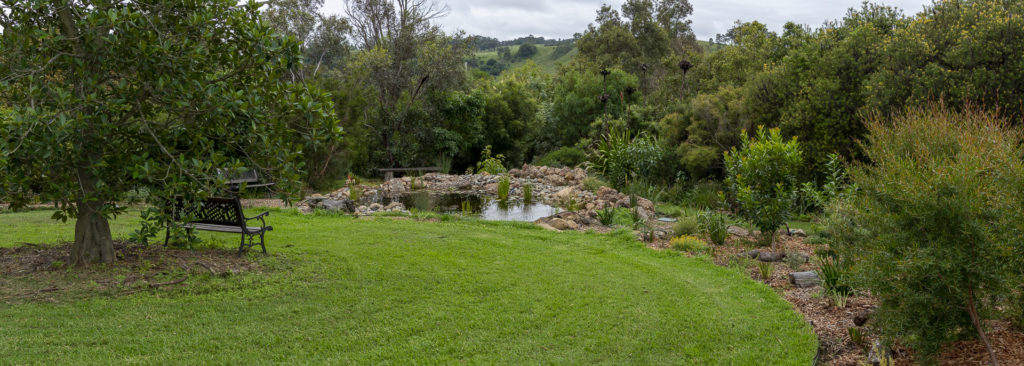
27. Dendrobium beetles
If you do not have these beetles that originated in Queensland on your Dendrobium orchids read no further and count yourself lucky.
If you do read on …. these orange and black beetles grow to about 10 mm long and can fly. In summer months, the adult beetle eats the new leaves of orchids. They then lay eggs in the soft, new stems and the larva a soft white maggot like grub hatches, then eats and destroy the stem and growing tip. At their worst, they will destroy all the new seasons’ growth on your orchids.
You can control by spraying an insecticide when you see them. The easier and more challenging way is to sneak up on them (there is always two of them), place your hand slowly below the leaves being eaten by the buggers and then, with your other hand try to grab them – if you miss, they will hopefully drop into your other hand as their defence is to drop to the ground when disturbed, now crush them.
28. Pruning rainforest shrubs
Over the years I have noticed that many of my smaller growing rainforest plants such as: Acmena species, Syzygium species and Archirhodmyrtus beckleri, flower and set seed around the months of December and January.
After this they start to grow strongly until about April. During this time of strong growth, I have found it to be the best time to prune (as severely as you like) as they quickly recover and look good again. Thinking about this, it is logical that this happens, as these are the months when Sydney gets it most rainfall and humidity.
29. Soil
When you are preparing new beds or refreshing existing garden beds, it is best to not import ‘garden soil’ from another property as there is every chance you could be importing trouble:
The soil could have been heavily limed or
Had added fertilizers high in phosphorous – thus making it unsuitable for native plants especially those that belong to the Proteaceae family (Grevilleas and Banksias to name a few).
There could be many micro-organism that may have harmful effect on your plants.
The best option is to work with what you have got and improve your soil with your own home made compost. If you need large amounts of new “soil”, obtain it from a reliable supplier and make sure it is suitable for native plants.
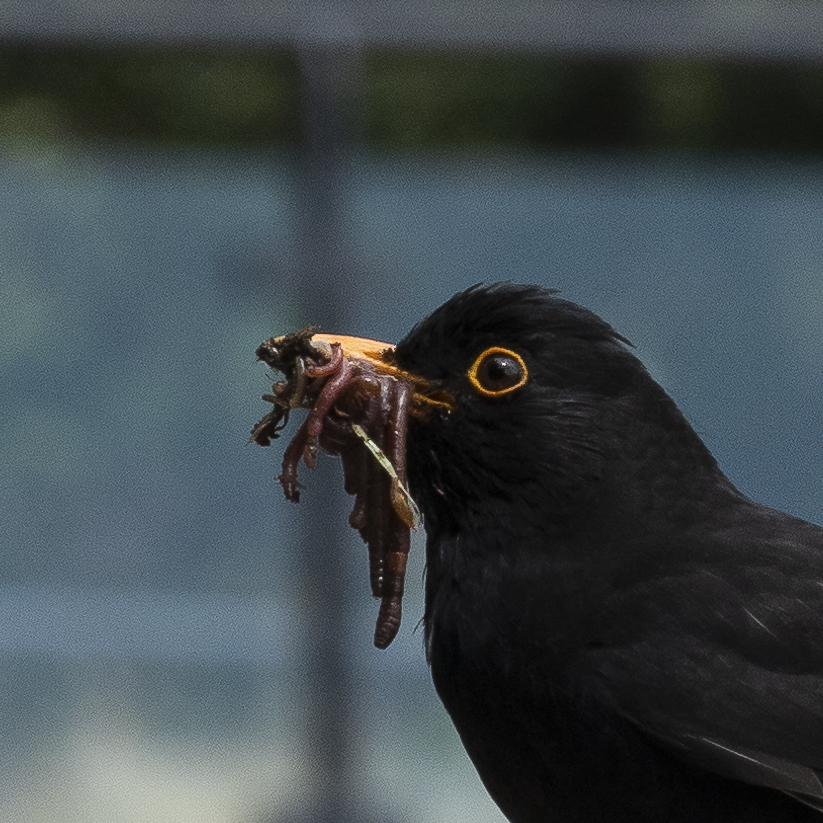
30. Yellowing of new leaves
Sometimes when I plant new Grevilleas or Banksias, they do not perform well and their new leaves are yellow. This is often a sign of phosphorous toxicity in native plants. Once phosphorous is present in the soil it takes a long time to leach out. So to lock-up the phosphorous and prevent the plant taking it up, water the plant with Chelated Iron as per the directions on the packet. At the same time, I usually water the plant with some trace elements just in case the soil is lacking in one or more of the minor elements.
Watch for the new growth – it should be healthy green. If this treatment does not work the first time do it again in two weeks’ time.
This treatment will not change the colour on old leaves.
31. Kentia palm
This slow growing palm originates from Lord Howe Island. It is a very popular plant for indoors, because when young they do not need much light. In their natural environment, they do not receive much light when young as they are growing under existing mature palms – it is only as they mature that they need more light.
32. Healthy soil
Your soil contains millions of different types of micro-organisms and one of their roles is to maintain soil fertility by recycling mineral nutrients essential for plant growth. This is a good reason to use a good layer of mulch over the soil. As the mulch breaks down, with the aid of these many micro-organisms, the soil is enhanced and over time the soil fertility builds up.
As Australian soils are often deficient on phosphate, out native plants make use of a specialised group of fungi called mycorrhizal fungi which attach to the roots and enhance the uptake of moisture and soil nutriments from the soil to the plant tissue. These fungi are also crucial to many orchids especially those without any leaves – they often need the right fungus to supply their nutriments.
33. Lichen
If you have rocks in the garden and sometimes roof tiles, covered with lichen (a living collaboration between algae and fungi) – congratulations as it is a good sign that you have healthy air low in airborne pollutants.
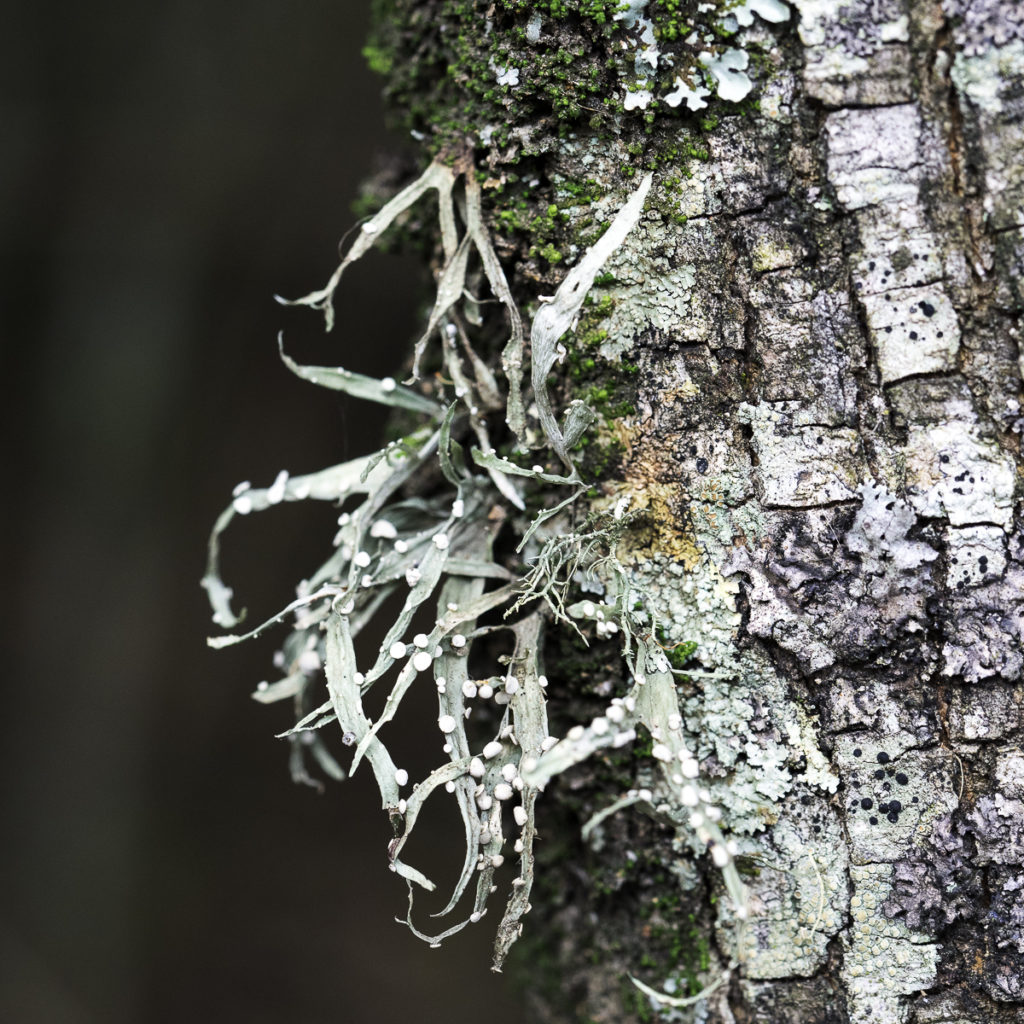
34. A few landscaping tricks
I have found that plants look much better when grouped together, especially in odd numbers – three of five ore the best numbers.
For best results select plants that will grow well in the chosen area and group plants with similar water and cultural requirements in the same general area of your garden.
35. Lawn alternatives
Save water and fertiliser by replacing lawn grass with groundcovers which do not require mowing or edging such as Dichondra, Pratia or Microlaena stipoides.
36. Adding nitrogen to the soil naturally
Chose Acacia, Senna, Casuarina, Pea flowers and other Australian legumes.
37. Choosing flower colours
Australia has more native plants than any other country in the world and there are a huge range of colours to choose from. We are particularly fortunate to have an abundance of blue coloured flowers.
Colour helps to create moods. You can use a colour wheel to choose colour harmonies or just go for a riot of colour – the choice is all yours and will be reflected in the character of your garden.
When choosing flower colours it is important to remember:
- Warm colours – red, pink, orange and yellow, give a sense of fun and activity; they tend to come to the fore ground and thus appear larger.
- Cool colours – blues, greens and some blue-violets, give a feeling of space and serenity; they tend to recede from the eye and can appear smaller.
- Neutral colours – white, grey and black. Grey is an excellent “linking “colour, be careful with white and black, both can appear as “holes” or spaces in a colour scheme. Both work well as highlighters of other colours.
- Limit the amount of contrasting colours. They are high impact so use them sparingly to create a focal point in your garden. Use more of the harmonious colours. They lie next to each other on the colour wheel; they relate to one another and do not clash.
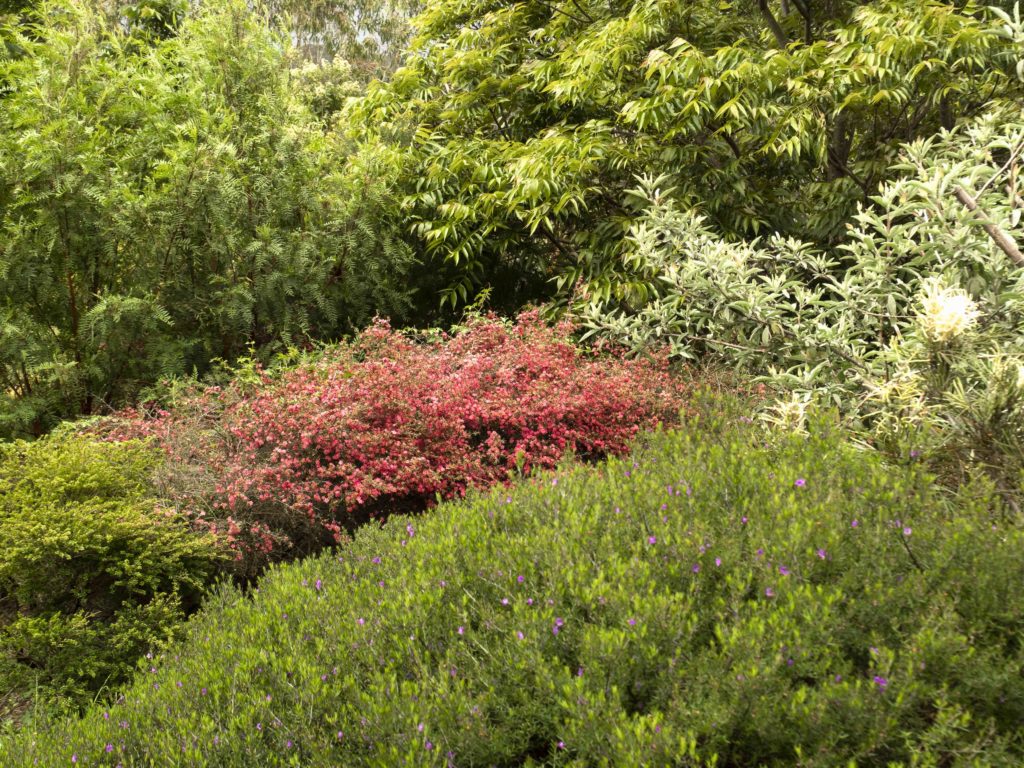
38. Cut flowers
Helen Moody advised me of the following … and it works.
There are three basic rules few simple to maximise vase life of native plants.: Keep them cool, watered and fed.
Cool: pick them in the cool of the day and place them straight away in a bucket of water, out of the sun. Keep arrangements away from heaters, draughts and air conditioners.
Watered: ensure buckets and vases are clean, top up as necessary, strip leaves that would be underwater, re-cut stems at an angle underwater.
Fed: add two teaspoons of sugar per litre, after first adding half a teaspoon of bleach. Adding a pinch of citric acid or a teaspoon of vinegar to each litre of vase water acidifies the water as plant stems take up acid water more readily than neutral of alkaline solution.
39. Limited life of dwarf kangaroo paws
The dwarf kangaroo paws such as Bush Pearl and Bush Ranger are only good for about three years. After that they do not flower as well and should be replaced.
40. Pruning hard
To keep Philotheca (Eriostemon) myoporoides looking great and flowering prolifically, prune 50% off the shrub after flowering.
41. The advantages of using tube stock
They are economical and cheap to buy.
They adapt quickly when planted out.
They only need a small hole to be dug when planting.
If the tubes are a square section, the roots run straight down and they should be easy to remove from the pot. Sometimes it the plant is pot bound then the tube will need to cut away to minimise root disturbance.
Many Thanks to Tharwa Nursery for reminding me of this.
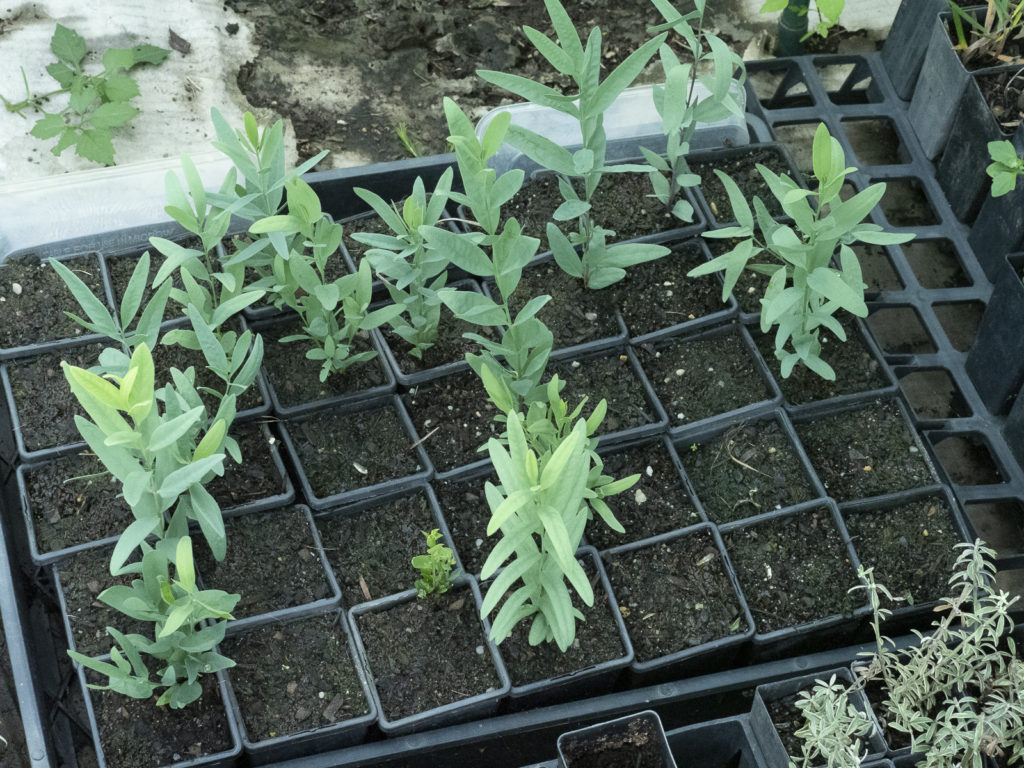
42. Psyllids
Lillypillies are the name adopted for Acmena and Syzygium and a few other related plants. They are generally hardy and pest free. However when grown in dappled light or shady areas some of them are particularly prone to being attacked by Psyllids – a small insect that gets into the leaf and produces tiny “bubbles” on the surface – it can create quite bad distortion of new growth and looks unsightly.
Some of the lillypillies are resistant to it. Resistant ones are:
Acmena smithii var. minor and its cultivars ‘Hot Flush’. ‘Allyn Magic’, Hedgemaster’, ‘Minipilly’ and ‘Dusky’
Syzygium luehmannii and its cultivars such as ‘Royal Flame’ and ‘Little Lucy’
the hybrid Syzygium ‘Cascade’. Syzygium paniculatum dwarf doesn’t get it very much.
However all the cultivars of Syzygium australe suffer badly from the pimple psyllids.
Treatment consists of cutting off the damaged growth. The other method is to spray with a systemic insecticide. However this is not always effective as the insect is often gone when you notice the damage. If you have plants that are attacked, it is best to remove them and replace with forms that do not suffer from Psyllids.
Happy gardening!
